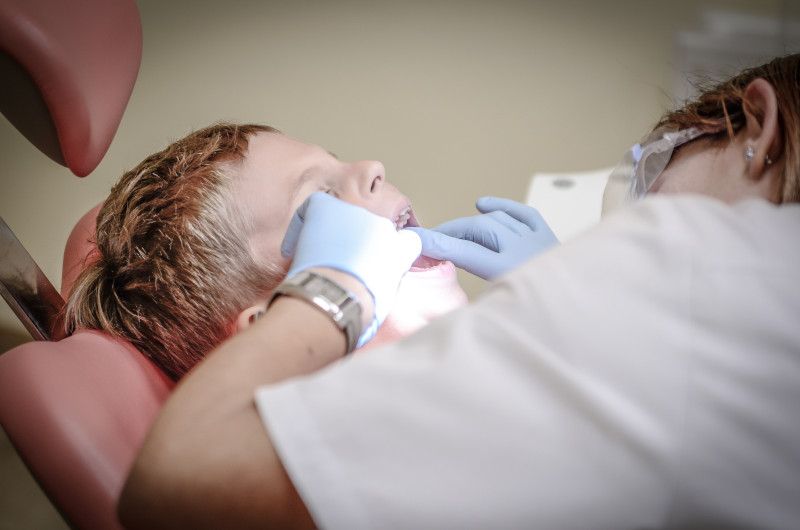Dental health is often overlooked, but it is one of the appointments you should avoid skipping. That’s because there is a large connection between dental health and overall health. If dental issues like plaque, tartar, tooth decay, gum disease, overbites, and underbites are left unattended, they can lead to other health issues like sleep apnea, pneumonia, cardiovascular disease, endocarditis, and even pregnancy/birth issues.
As such, individuals need to be aware of good hygiene means and teach good dental habits to their children. This starts with understanding common dental issues, what to look for, how to treat them, and how to avoid and prevent them in the first place.
What Is Plaque?
Plaque is a soft, invisible, sticky film that builds up on your teeth and gums. Plaque contains bacteria that contribute to several dental issues. Your saliva, the food you eat, and drinks that you consume react with the bacteria found in plaque. The reaction releases an acid that breaks down tooth enamel, which can lead to cavities.
If you are not taking care of your teeth and routinely visiting dental professionals, excessive plaque can progress into more serious dental health issues such as gingivitis (gum inflammation) and periodontitis (gum disease).
What Is Tartar?
Tartar is what plaque progresses into if you do not have the plaque removed from your teeth. Tartar represents dental buildup and it is much more difficult to remove. While plaque is a soft buildup, tartar is a hard mineral buildup. Depending on how long it has been left untreated, tartar can be white, yellow, brown, and black. When you develop tartar, it can expand to and even cover other teeth. If left untreated it can lead to tooth decay, gum inflammation, and it is one of the main causes of gum disease.
How to Get Rid of Plaque and Tartar Buildup
Getting rid of plaque and tartar buildup begins with proper dental hygiene. The American Dental Association (ADA) is responsible for dental hygiene recommendations. A dental hygiene routine should include the following:
- Brushing your teeth: be sure to brush your teeth twice a day with a toothbrush that has soft bristles. Only use toothpaste that is ADA approved;
- Flossing your teeth: be sure to floss your teeth once a day with around 18 inches of floss. Create a c-shape around your teeth and direct the floss up and down gently while keeping pressed against your teeth;
- Drinking water: there are four main reasons water is good for your teeth: it strengthens teeth, cleans your mouth, reduces dry mouth, and it is free of sugar and calories;
- Adjusting your diet: you need to ensure that you have healthy nutrition for healthy teeth. Avoid sugary foods, and aim to eat foods that are rich in calcium, phosphorus, and vitamin C;
- Changing your toothbrush: You should aim to change your toothbrush every three to four months, or as you start to notice bristles breaking off. Only use toothbrushes that are ADA-approved;
- Regular dental check-ups: According to the ADA, regular dental visits should be based on the individual and their dentist’s recommendation. It is commonly recommended to go every six months.
While plaque buildup can be managed at home, tartar buildup can only be removed by dental professionals. Tartar removal is done through a process called scaling. Scaling is primarily done using two methods:
- Scraping using a dental scaler or curette;
- Spraying using an ultrasonic water-metal hybrid instrument.
After one of the methods is used, dental professionals finish by root planing. This process is meant to smooth the surface of the root to promote healthy gums. If you have misaligned teeth, plaque and tartar prevention can be more difficult. It would be beneficial to schedule a consultation for corrective options to help overcome this.
What if You Have Braces or a Permanent Retainer?
Although there are both pros and cons to braces and retainers, one of the cons is that maintaining proper oral hygiene can prove more difficult. If you have braces or a permanent retainer, you are generally more prone to plaque and tartar. It becomes increasingly important to schedule regular checkups with your dentist and orthodontist to help reduce buildup. By contrast, Invisalign clear aligners can be removed, allowing for routine tooth brushing. Even so, recurring scheduled visits to dental professionals — alongside practicing good oral hygiene — will help keep plaque and tartar at bay.
What to Do if You Notice Signs of Gum Disease
When you let excessive amounts of plaque and tartar buildup, you increase your chances of gum disease. If gum disease is not treated, it can lead to tissue damage, bone damage, and tooth loss. In order to mitigate this, you need to be aware of the symptoms of gum disease. According to the American Academy of Periodontology (AAP), symptoms of gum disease include:
- Red, swollen, or tender gums;
- Bleeding while brushing, flossing, or eating;
- Receding gums;
- Teeth loss or separation;
- Pus between gums or teeth;
- Constant mouth sores;
- Constant bad breath.
If you discover these signs, it is important to schedule a consultation with a dental professional. They can provide insight into whether or not you have gum disease, and what to do for the next steps if you do. Be proactive about your dental health. If you present any of the signs above, it is best to take action immediately.
